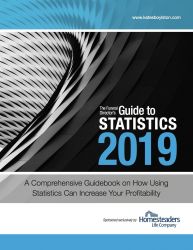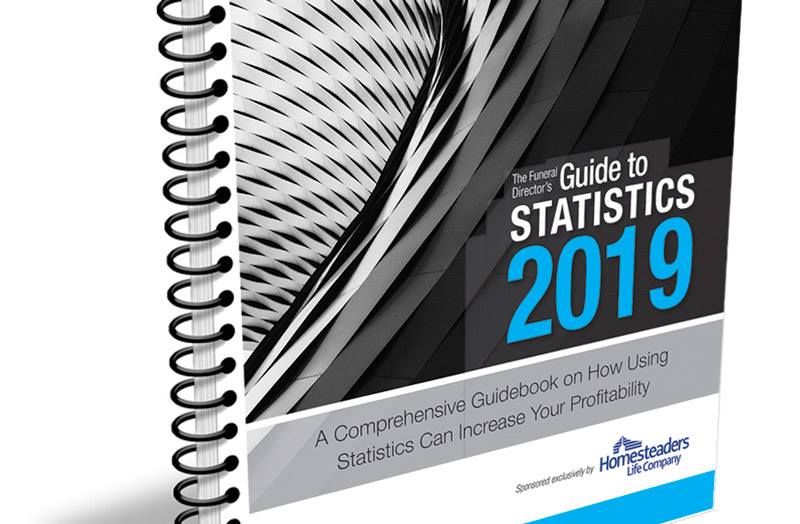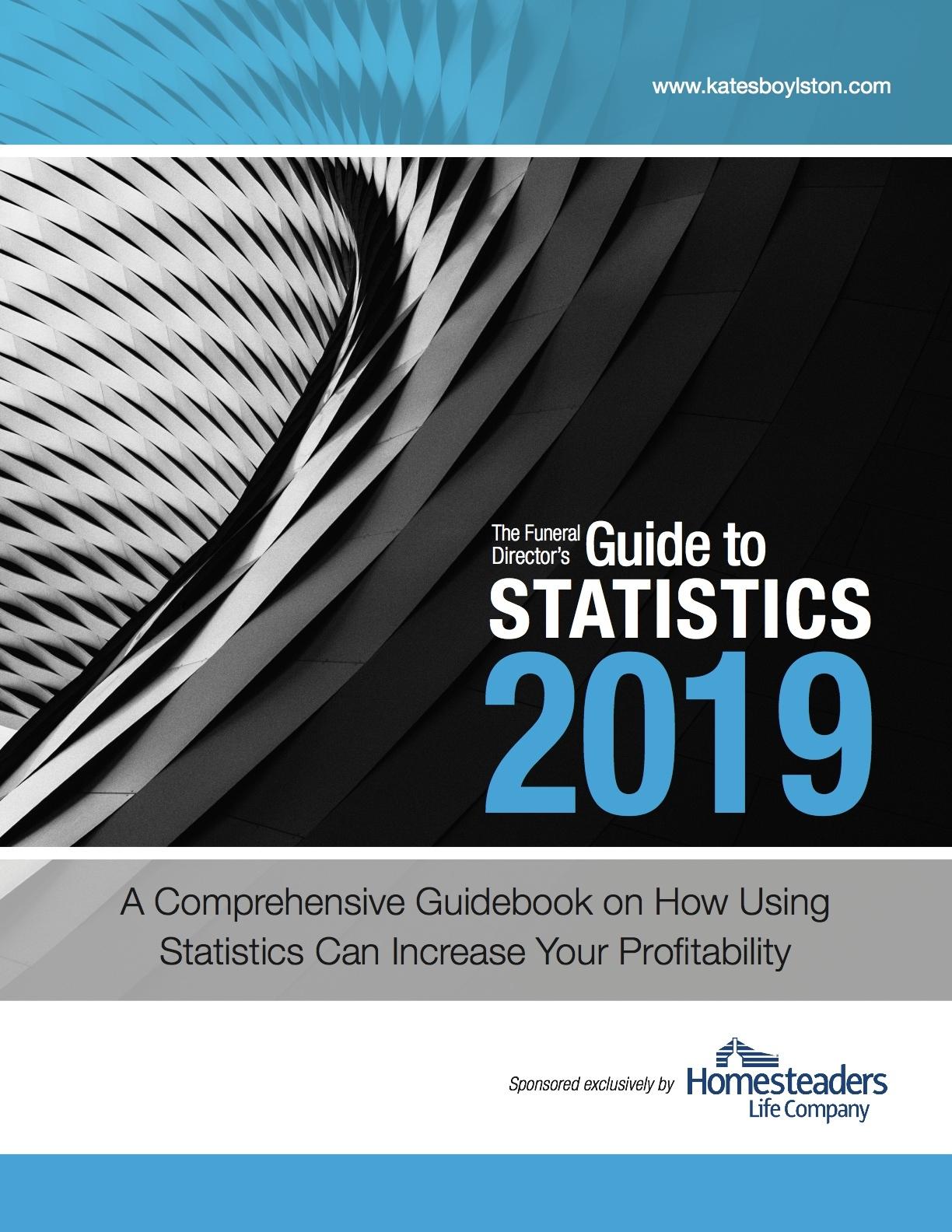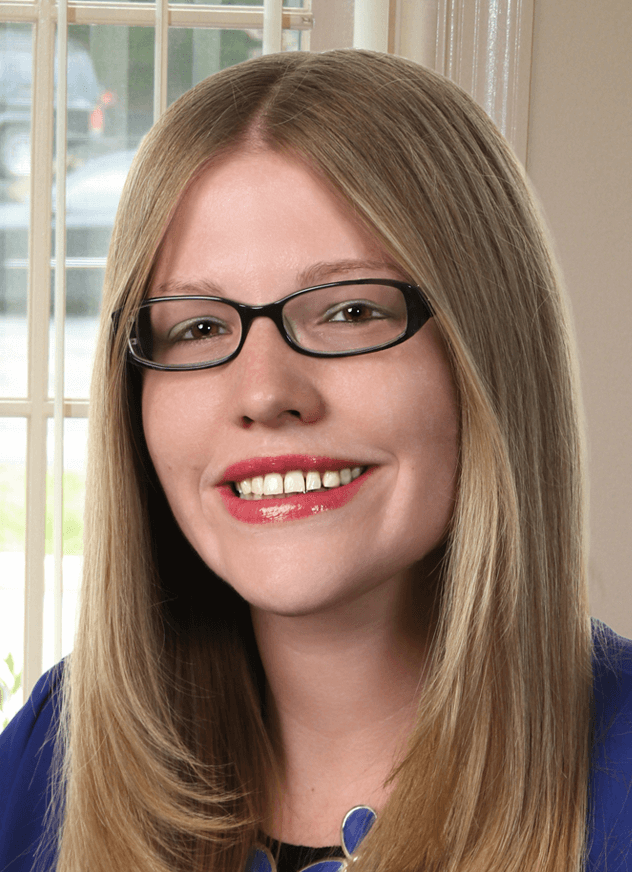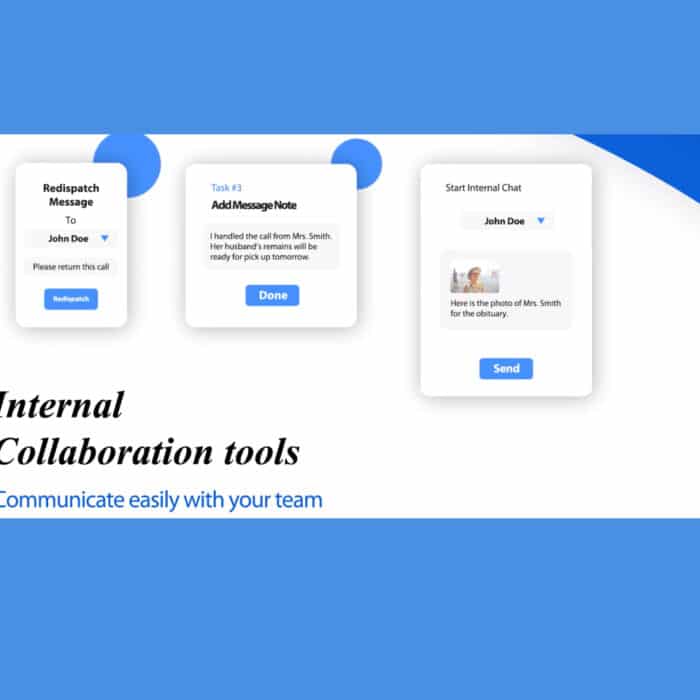Jan 29, 2019
Read our recent survey findings to learn how
funeral directors are using mobile technology today. This article was
originally published in Kates Boylston Publications’
The Funeral Director’s Guide to Statistics (2019 issue) by our Staff Writer,
Jessica Farren (Fowler). This comprehensive booklet is packed with the latest
data to help you run your funeral home. This latest edition features the most
up-to-date statistical information in the industry, and provides you with tools
and knowledge to better understand buying trends, marketing metrics and more.
Click here to
learn more or to order your copy of the Funeral Director’s Guide to Statistics.
2019 Survey Findings: Mobile Technology Trends in the
Funeral Profession
Public pay phones. Pagers. Radiotelephones.
In the past, these outdated forms of communication, and
their many limitations, greatly impacted the daily lives of funeral
directors.
Today, mobile technology also plays a major role in shaping
how a funeral home conducts business. Traditionally, funeral homes are considered by
many to be a high-touch, low-tech profession characterized by personal service.
At the same time, a career in funeral service is one of the only vocations that
requires 24/7 availability. These two conflicting aspects of the profession
have created a very divergent view of mobile technology. While some directors
are heavy app users and rely on their smartphone to streamline business
processes, others are resistant to these emerging technologies because of the
impersonal nature of mobile communication. Regional and generational
differences also play a major role in shaping these attitudes.

This survey assesses how the expansion of smartphones and
mobile technology impacts the day-to-day work of funeral professionals.
Overall, more than 1,100 funeral professionals responded to the survey.
Participants were asked to answer questions pertaining to their usage of
different mobile apps, social media and language translation tools. The survey
also examines common barriers that prevent funeral professionals from utilizing
mobile solutions. In addition, participants were asked to share their opinions
on mobile technology and provide recommendations on different solutions that
have helped their funeral home.
The survey was
conducted by
ASD – Answering Service for Directors, the leading funeral home exclusive
answering service, and was sent by means of a questionnaire using the Internet
survey tool Survey Monkey. In an effort to construct a thorough analysis of the
marketing and communication behaviors of funeral professionals, ASD polled both
its current client base as well as funeral professionals who do not use the
company’s services.
About
Survey Participant
Current
Position
The survey drew responses from 1,172 funeral professionals:
About 38 percent (447) were full-time licensed funeral directors, 16 percent
(190) were sole owners, 13 percent (155) were co-owners, 11 percent were general
or location managers (125), 5 percent (62) were apprentices, 5 percent were
support assistants, receptionists or office administrators (58), 3 percent were
part-time funeral directors (32), 3 percent were family services counselors or
arrangers (30), and 1 percent were funeral attendants (13). About 5 percent (60)
selected ‘other’ and listed a different position such as a crematory operator,
celebrant, or trade embalmer.
Location
The survey was sent out to funeral homes located in all 50
states. About 46 percent (542) of the funeral
professionals polled serve families in a suburban area, 31 percent (374) serve
families in a rural area, and 21 percent (256) serve families in an urban area.
First Calls Handled Per Year
About 80 percent of funeral professionals surveyed handle
more than 100 cases per year. More than a third (36 percent) handle over 300
cases a year. Below is a breakdown of this data.
|
First Calls |
% of Respondents |
Number of |
|
0-50 |
5 percent |
66 |
|
50-100 |
15 percent |
180 |
|
100-299 |
43 percent |
506 |
|
300-499 |
17 percent |
198 |
|
More than 500 |
19 percent |
222 |
Cremation Rate
Slightly more than half of the funeral professionals polled
(673) have a cremation rate over 40 percent. Below is a full breakdown of this
data.
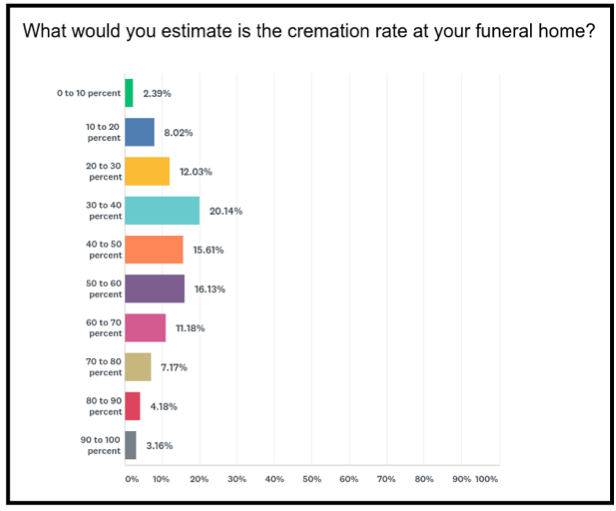
Mobile App Usage
Downloaded Apps
Participants were asked how many mobile apps were currently
downloaded onto their digital devices. Nearly half of the respondents (47
percent) have 15 or more mobile apps downloaded. 35 percent have between five
and 15 apps downloaded. About 15 percent answered they had fewer than five
mobile apps downloaded and nearly 3 percent have never downloaded a mobile app.
Frequency of Use
The survey asked funeral professionals how many mobile apps
they use on a typical day. Almost half of the respondents (46 percent) utilize
5-10 apps during a typical day. About 39 percent answered that they use fewer
than five and 4 percent don’t use any. A
small fraction (about 11 percent) are using more than 10 mobile apps on a
typical day. This data suggests that funeral directors are only using about
half of the mobile apps they have downloaded on their phone on a daily basis.
This is consistent with national statistics. According to the
2017 Retrospective Report released by
App Annie, Americans launch an average of nine mobile apps per day.
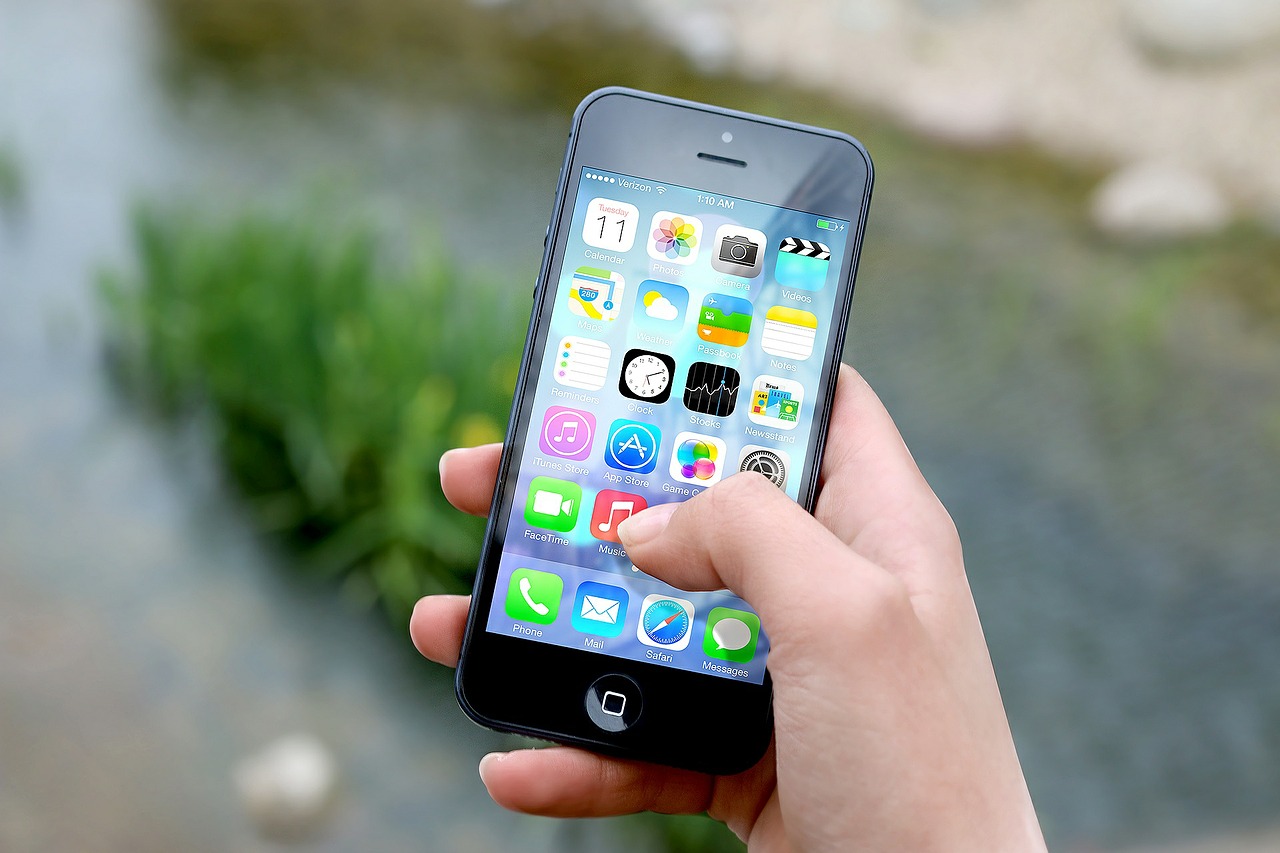
Business Apps
Participants were asked how many mobile apps they use
specifically to accomplish business tasks. The majority of respondents (72
percent) use fewer than five mobile apps for business purposes. About 18
percent use between 5-10 mobile apps for business while fewer than 3 percent
are utilizing more than 10. About 7
percent do not utilize any business-related mobile apps.
The survey results indicate that while most of the funeral
directors surveyed do rely on a few business apps, most have not found more
than five mobile tools that are useful. In
2014,
ASD’s Funeral Communication Survey also studied funeral director’s use of
business and productivity apps. The 2014 survey polled 660 funeral directors
and found that nearly a quarter of respondents (24 percent) were not using any
mobile apps for business. This data reveals that approximately 17 percent of
funeral professionals began using mobile apps for business purposes within the
last four years.

Mobile Technology Business Purposes
The survey asked funeral professionals to indicate how their funeral home uses mobile technology for business purposes. Below is a breakdown of the most common funeral home business uses of mobile technology.
-
-
- 48 percent use mobile technology to track business communication and telephone calls
- 41 percent use mobile technology to access and/or control the funeral home’s mobile optimized website
- 31 percent use mobile technology to collaborate with their team on projects
- 30 percent use mobile technology to conduct social media marketing
- 27 percent use mobile technology to advertise through social platforms
- 22 percent use mobile technology to display options to family during the arrangement conference on a mobile tablet
- 18 percent use mobile technology manage the funeral home’s finances
- 15 percent use mobile technology to conduct email marketing
- 5 percent use mobile technology for embalming calculations
- 1 percent use mobile technology for fingerprint scanning
- About 5 percent of respondents selected ‘other’ and listed other business tasks they accomplish with mobile technology such as posting a death notice, playing music or slideshows during funeral service, and tracking payroll
-
It is interesting to note that the top two reasons funeral professionals
utilize mobile technology for business relate to the tracking and monitoring of
the funeral home’s communications. Mobile technology has altered how funeral professionals
interact with their community by giving directors the tools necessary to offer
more responsive customer service than was possible in the past.
From answering service apps that allow users to connect into
a phone call in progress to mobile-optimized websites that can be updated any
time and any place, new mobile solutions can give funeral homes a competitive
advantage over other firms. Funeral professionals are more connected to the
families they were serving than ever in the past as they can immediately
respond to time-sensitive phone calls, text messages emails and web communications.
These communication enhancements allow funeral homes to build a reputation
based on unrivaled customer service.
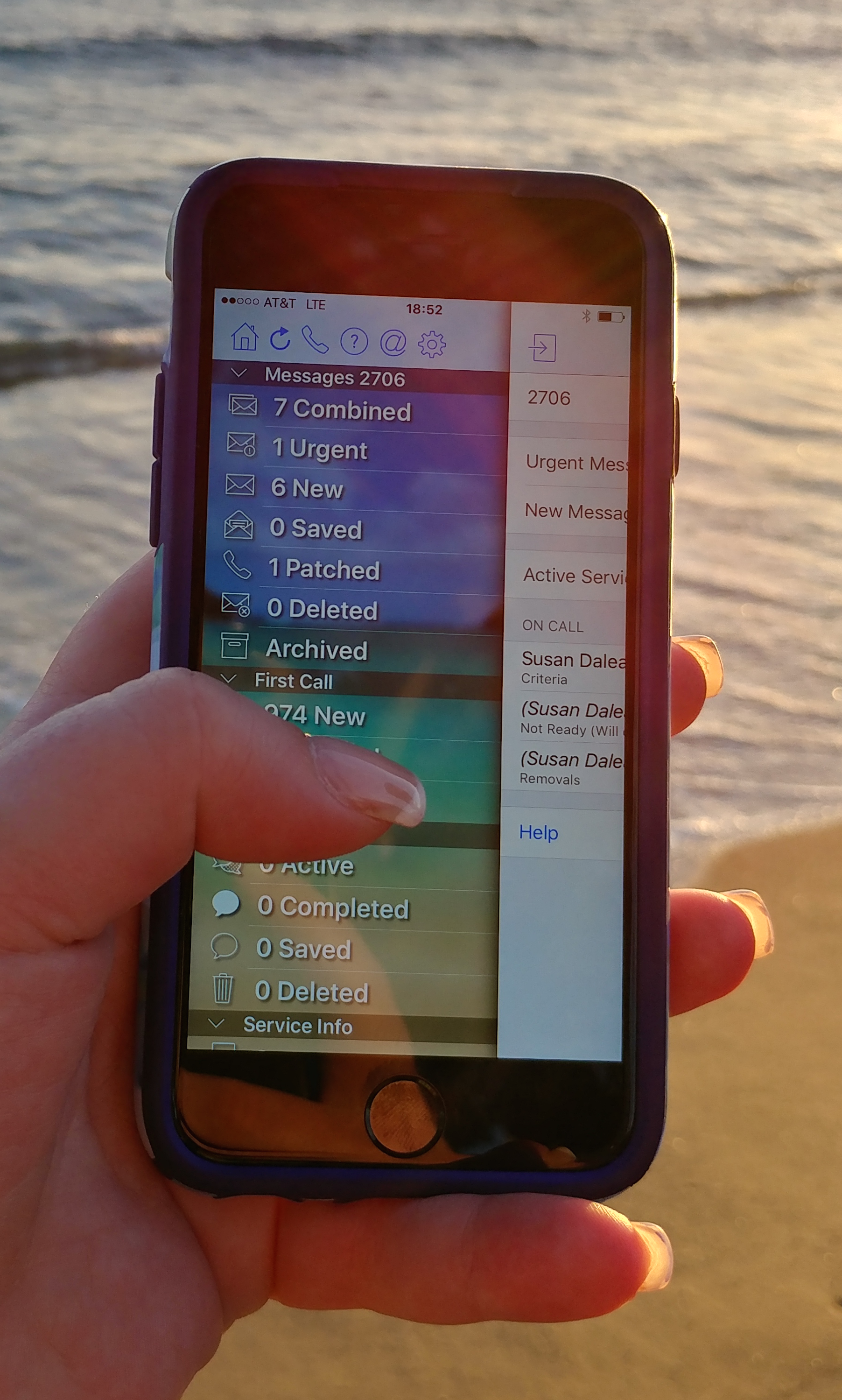
When it comes to interactions with families in person,
however, most funeral directors prefer to avoid the use of screens. Less than a
quarter use mobile technology to display options to families during an
arrangement conference.
The survey also found that only about a third of respondents
are using mobile technology internally to communicate with their own team. With
a growing number of social collaboration apps and programs being introduced
that help teams with everything from assigning tasks, instant messaging and
transferring files, it is curious that this technology has not been adopted by
more funeral homes at the same rate as other professions. A recent survey
conducted in December 2016 by the online IT community,
Spiceworks, found that
42 percent of companies with fewer than 100 employees are currently taking
advantage of such collaboration tools.
Mobile Apps Ranked By Usage
Survey respondents were asked which mobile apps they have
used in the past. Apps were categorized by the purpose they serve with several
popular app names listed as examples for each response. Below is a breakdown of
this data. Of the 1,172 respondents, only 6.6 percent (68) answered that they
have never used any of the apps on the list.
-
-
- 75 percent have used a weather app such as the Weather Channel app
- 68 percent have used email apps such as Gmail
- 63 percent have used social media apps such as Facebook
- 57 percent have used answering service apps such as ASD Mobile
- 51 percent have used banking/finance apps such as Mint
- 36 percent have used file storage apps such as Dropbox
- 28 percent have used calculator apps such as EmbalmCalc
- 20 percent have used language translation apps such as Google Translate
- 19 percent have used faxing or scanning apps such as JotNot
- 18 percent have used form creation and editing apps such as DocuSign
- 15 percent have used remote desktop apps such as LogMeIn
- 8 percent have used office security apps such as Nest
- 7 percent have used team collaboration apps such as Trello
-

This data
reveals there is a wide gap between mobile apps funeral directors have tried
for personal use versus those they have used specifically for business
purposes. For instance, 63 percent answered they have used social media apps
such as Facebook, but only 30 percent of those surveyed use mobile technology
for social media marketing. Similarly, while 51 percent have used a banking or
finance app, fewer than 20 percent use mobile technology to manage the
funeral home’s finances. These results indicate that while the vast majority of
funeral professionals surveyed feel comfortable using mobile technology on a
routine basis, a much smaller percentage are using these solutions to eliminate
or streamline business tasks.
Mobile App Purchases
Survey respondents were asked how often they pay for a
mobile app. Nearly half (44 percent) of the survey group have never paid for a
mobile app. About 41 percent will ‘very rarely’ pay for an app while 13 percent
have ‘occasionally’ paid for a mobile app. Fewer than 2 percent answered that
they frequently pay for mobile apps. These responses are consistent with
national averages as well. It was forecasted in 2015 that approximately 33.3
percent of all mobile users pay for a mobile app at least once a year,
representing a downward shift toward less mobile purchases. (eMarketer)

“The preference for free, ad-supported apps is rising among
mobile users, and the share of smartphone and tablet users who pay for apps
will actually tick downward over the next four years, despite the continued
growth in the number of smartphone and tablet users and the number of app users
overall
,” said Cathy Boyle, senior mobile analyst at eMarketer. This is an
interesting trend to follow because the cost of mobile apps is one of the
barriers that prevent funeral directors from utilizing mobile technology (see
below).
Mobile Communication Barriers
When considering the fact that nearly 80 percent of the
funeral professionals surveyed use fewer than five apps for business purposes,
the question remains: what is holding funeral directors back? Why are so few
directors using mobile apps and tools to streamline business tasks or improve
communication? The answers are varied
and reflect the many divergent opinions that funeral professionals have about
mobile technology.
Fewer than 7 percent of those surveyed answered that there
were no barriers preventing them from utilizing mobile technology. Nearly half
of respondents answered that they were unsure which apps were best suited for
them. About a quarter answered that there were too many apps to choose from.
This is a common frustration many share as there are often multiple apps that have
the same purpose, but it’s often difficult to determine which functions more
intutively unless you have downloaded and utilized both applications.
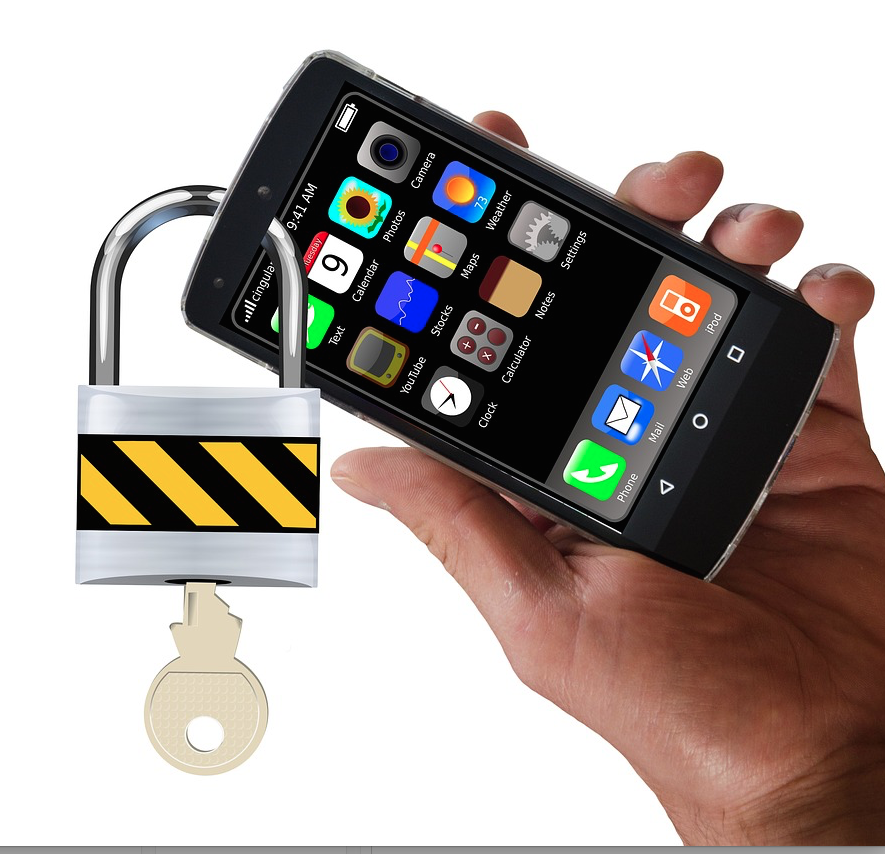
About 18 percent of survey respondents answered that the
complexity of apps is a hindrance to using mobile technology, while 14 percent
answered the cost of a smartphone and/or mobile apps is a barrier. About 6
percent answered that they have had too many bad experiencing using mobile apps
in the past.
More than 11 percent of participants selected ‘Other’ and
listed a different reason for their reluctance to use mobile technology. Some
of the common reasons listed include: security concerns, the need to keep
personal communication separate from business communication, and the reluctance
of older employees at the funeral home to adopt to technology.
Below are some of the
specific barriers listed by funeral professionals surveyed:
“Ownership does not
embrace any technology. This company was built on 1980s principles and ways. He
keeps it still the same way. He always says we need to keep things the way this
company was built in the 70s and 80s. His company is losing business because of
his principles.”
“I don’t like clutter
on my phone, and too many [apps] makes them difficult to locate. By the time I
find them and open then, I could have found it on my search engine.”
“Whole staff is not on
board so the company will not pay for a service only one or two employees will
use”
“I DO NOT wish to use
this type of a NON-PERSONAL way of conducting a sensitive type business.”
“We work hard to
protect our client’s security so I keep as much information as possible off my
phone.”
“My phone/tablet is
for my personal use. If the company would like to provide or pay for a device
then I would be apt to utilize it more. This is how I separate work from
personal.”
“Too
many older employees who are set in their ways and refuse to learn
technology.”
“Apps are well
intentioned, but often buggy and lead to network errors that will not
seamlessly integrate with older technologies used in the office.”
Translation Tools
Hispanics are the country’s largest minority—about 17
percent of the population—and expected to double to 106 million residents by
2050. According to
Pew Research, one-third of Hispanics are not proficient in
English. These are important statistics for funeral directors to know as there
are now 41 million people in the U.S. who speak Spanish as their native
language.
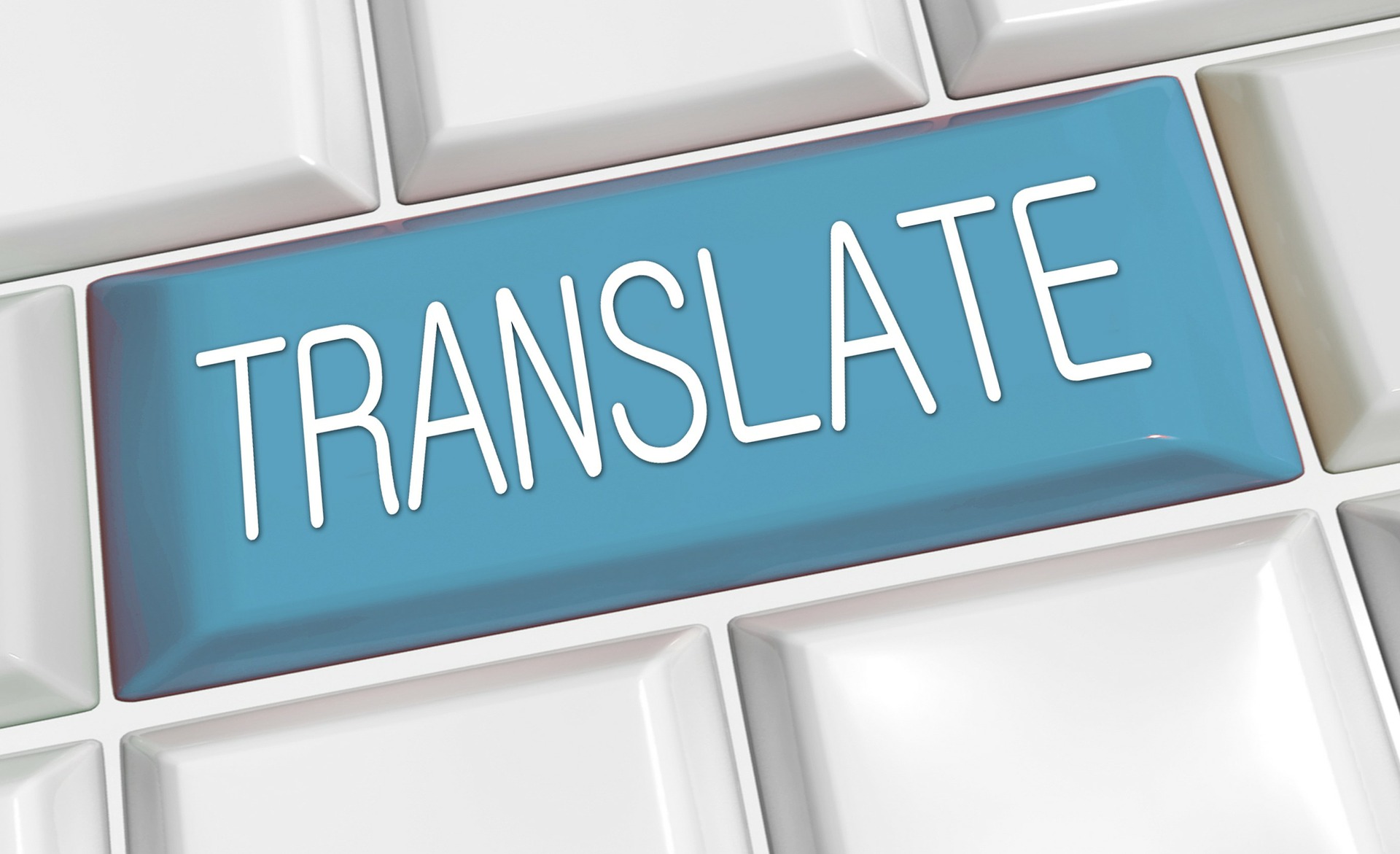
With an increased number of Spanish-speaking families living
in America, the use of different
language translation services and tools has
skyrocketed. In 2017, the global
language services industry market size reached over 43 billion U.S. dollars and
is projected to rise to almost 47.5 billion by 2021. (Statista). The number of
people employed in the translation and interpretation industry has doubled in
the past seven years, according to the Department of Labor.
Survey participants were asked how these language
translation concerns have impacted their business. Nearly a quarter (291) of
the funeral professionals surveyed answered that they have needed to utilize a
mobile tool or app for language translation in the past. More than half of
those surveyed (637) believe they will need such a solution in the future. These
statistics show that the majority of funeral professionals surveyed recognize
the important significance of overcoming language barriers in order to serve
Spanish-speaking families.
Social Media
Social media and digital marketing are now one of the
fastest growing industries with millions of new social media users joining a
platform every day. Nearly every
statistic surrounding social media marketing has increased tremendously in
recent years, including the number of businesses using it as part of their
marketing strategy. According to data released by
BIA/Kelsey, more than 77
percent of small businesses use social media to promote their business in 2017
(up from 73.2 percent in 2016.)

According to the survey results, funeral home usage of
social media is only a year behind the current national average. About 73
percent of those surveyed are using a social media platform to market their
funeral home. Of those using social media, Facebook was the most popular social
media platform for funeral home marketers while Snapchat was the last popular
platform. Below is a breakdown of this data:
|
Social Media Platform |
Percentage of users |
Number of respondents |
|
Facebook |
67 percent |
793 |
|
Google+ |
24 percent |
284 |
|
LinkedIn |
14 percent |
173 |
|
Twitter |
11 percent |
140 |
|
Instagram |
10 percent |
119 |
|
Pinterest |
2 percent |
32 |
|
Snapchat |
1 percent |
15 |
It is interesting to note that while 73 percent are using
social media to promote their funeral home, only 30 percent answered they are
utilizing mobile technology for this purpose. From this, one can conclude that
about 40 percent of the funeral homes surveyed are either outsourcing their
social media to a marketing company or relying strictly on desktop computers instead
of mobile technology when monitoring their funeral home’s social media
accounts.
Mobile App Recommendations
The survey asked respondents if there were any mobile apps
they would recommend to other funeral directors. 225 funeral professionals
provided responses. Below are the top 10 apps listed and some of the more
specific answers provided by survey participants:
-
-
- ASD Mobile – Learn More
- Google Drive – Learn More
- DocuSign – Learn More
- Dropbox – Learn More
- Find A Grave – Learn More
- Legacy Touch Fingerprint Scanner – Learn More
- EmbalmCalc – Learn More
- NGL Calculator – Learn More
- Canva – Learn More
- Waze – Learn More
-

“Our funeral home has
had a lot of success with document cloud apps, such as OneDrive. Using an app
like this allows us to have access to documents such as our general price list,
first call sheets, arrangement worksheets, etc., even if we are not at the
funeral home. We also use it to create checklists for cases so that each
employee can check and see what has been done and what still needs to be done
for each family from our mobile phones.”
“Life Cycle, Unsplash,
Canva, Pixlr, Filmora Go, 1SE, TripCase, Clue, StitchFix, Legacy Touch,
Dropbox, ASD, NGL Calc, EmbalmCalc, Google Drive, Sheets, Google Calendar,
Nest, Tile, Libib, Pandora, and all the Apple default and social media apps
(honestly I would recommend these apps to anyone, but I use them the most to
help with my job/schedule/life as a funeral director/embalmer).”
“The National Funeral
Directors Board Exam mobile app. Especially for those that are apprentices
about to take the State or National Board Exam.”
“The answering service
app. We receive a text from the operator and we review all the details directly
from the app: less cost incurred when answering service communicates via text.
I also enjoy the Audible & Every Dollar apps.”
“Airtable- used in our
funeral home to keep track of what all has and hasn’t been done with each case.
i.e. newspaper obituary sent, veteran services contacted, police escorts, etc.”
“I love Canva for
quick publishing work. Of course, I use iTunes all the time to build playlists
for my clients. I use Twitter to follow industry news. Finally, I use Voice Memos
all the time to record to-do tasks that pop into my head.”
Kates Boylston Publications, January 2019
Are you surprised by any of the findings of ASD’s Mobile
Technology survey? Leave us a comment – we’d love to hear your thoughts on our
survey results!
RELATED READING:
Homesteaders Sponsors ‘The Funeral Director’s Guide to Statistics’
Insights From ASD’s 2017 Funeral Home Marketing and Communication Survey
How a Content-Driven Marketing Approach Can Help Your Funeral Home Grow
About The Author
Jess Farren (Fowler)
Jess Farren (Fowler) is a Public Relations Specialist and Staff Writer who has been a part of the ASD team since 2003. Jess manages ASD’s company blog and has been published in several funeral trade magazines. She has written articles on a variety of subjects including communication, business planning, technology, marketing and funeral trends. You can contact Jess directly at Jess@myASD.com
